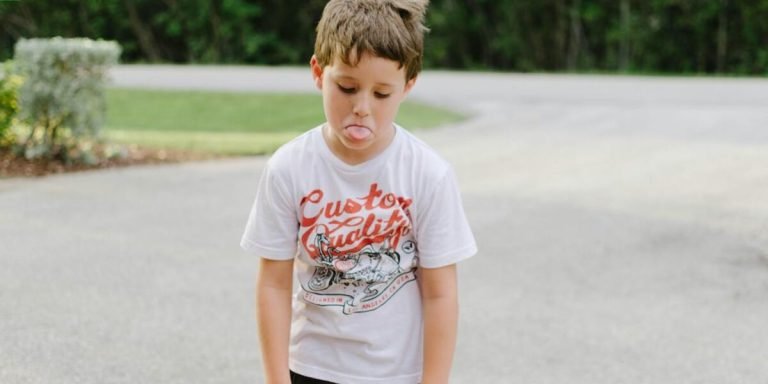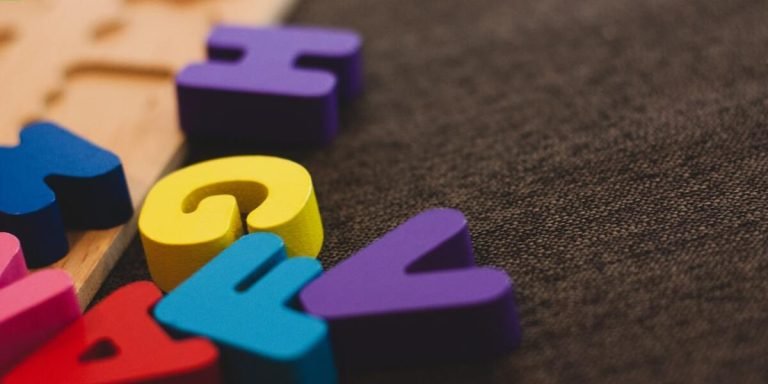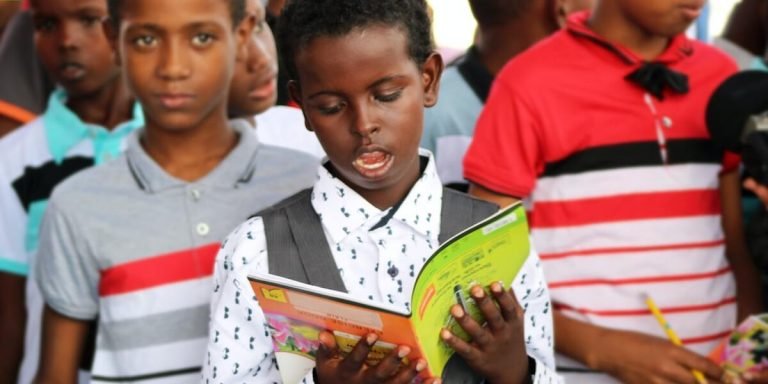Sensory Seeking Behavior in Children: Understanding and Navigating the Challenges
Understanding a child’s sensory seeking behavior is crucial for both parents and educators, particularly those involved in special education resources and support. The term “sensory seeking” refers to certain actions or behaviors that children exhibit when they’re trying to fulfill their sensory needs – this can be anything from the constant need to touch objects, craving intense tastes, or even being attracted towards bright lights.
This post aims at elucidating what constitutes such behavior patterns among children and how one could effectively navigate through these challenges. By delving deeper into understanding the triggers that stimulate sensory seeking tendencies in youngsters, we open up doors of inclusivity while also bolstering our commitment towards providing holistic childhood education.
Did you know?
Contrary to popular belief, Sensory Seeking Behavior is not restricted to children with diagnosed disorders. In fact, all children go through developmental stages where they seek sensory input as a part of their natural growth and learning process.
Understanding Sensory Seeking Behavior in Special Education
“Sensory seeking behavior is increasingly recognized as a crucial factor in specialized education, particularly with the advent of technology-enhanced learning methods. These behaviors are exhibited by children who display an intense craving for sensory inputs — they’re drawn towards bright colors, engaging textures or distinct sounds and patterns like magnets; their curiosity seemingly insatiable. Appreciating this aspect of childhood development helps educators devise measures to engage these young minds more effectively.
In today’s digital age where “Special Education Resources and Support” have exponentially evolved, integrating technology into special education curriculum can work wonders for sensory seekers. From interactive games that boost hand-eye coordination to instructional videos capturing visual attention span, tech tools offer myriad possibilities amplified engagement and experiential learning sessions.designing tailored strategies catering specifically to the needs of each child has never been easier than it is now in 2023!
Identifying Signs of Sensory Seeking in Students
Sensory seeking behavior is a common trait among students with special needs and it’s an aspect every educator should be familiar with. Recognizing these signs can help teachers modify their teaching approaches to better support such pupils.
Children exhibiting sensory-seeking tendencies actively seek out ways to stimulate their senses. Some might be in constant motion, while others may seem fascinated by certain textures or noises.
1. Constant Movement: One sign you could look for when identifying sensory seeking behaviors involves the child’s movement patterns. If they are always on me move – tapping feet, rocking back and forth, or squirming – this could indicate that they’re looking for additional sensory input.
2. Fascination With Textures: Another indicator is if the student shows fascination towards certain textures and feels compelled to touch everything around them consistently throughout their day-to-day school activities — from clothing materials to surfaces of various objects in your classroom environment.
3. Fixation On Sounds And Lights: Students who get easily distracted by sounds like humming of machines or flickering lights can also show signs of being engaged in ‘sensory-seeking.’ They tend not only listen but repeat those sounds as well which indicates more than normal interest level usually seen among kids at same age cohort.
Strategies to Support Sensory Seekers in the Classroom
Strategies to support sensory seekers in the classroom revolve around creating an environment where students can engage their senses. This helps these special learners get a better grasp of information, stay focused and generally improve learning outcomes.
One strategy that is proving helpful with technological integration is the use of digital simulations or virtual reality experiences. With gadgets like VR headsets, children showing sensory seeking behavior are offered opportunities to interact with subjects being taught virtually – touching textures, viewing colored displays etc., which has proven effective for improving memory retention and understanding beyond conventional teaching methods.
Integrating Sensory Tools and Activities for Enhanced Learning
Integrating sensory tools and activities within a child’s education is a strategic advancement that connects directly to the keyword – “sensory seeking behavior”. This approach not only enhances learning but also aids in managing children who display such behaviors. Sensory-seeking behavior refers to actions where kids may be drawn towards certain textures, movements or sounds which could help them sustain their concentration and improve focus during lesson times.
In this present year 2023, technology has evolved into an essential tool for childhood education solutions. Innovative ways of using these technologies have been found beneficial especially in addressing sensory seeking behaviors amongst students. For instance, devices like tablets can offer apps designed with special educational resources including engaging games that encourage sensory-related tasks and interactive puzzles tailored specifically for those whose tendencies lean more toward tactile stimuli.
Thereby unlocking new potentials while redirecting excess energy constructively.
A well-designed integration of technology does not just stop at achieving academic goals; it equally promises support on different scales – emotional regulation being one of them seriously considered under Special Education Resources Support initiatives worldwide now. By gradually understanding how specific tech features enhance students’ sense perception capabilities satisfactorily through repeated use over time we are raising future generations carefully equipped with vital skills meet demands rapidly evolving digitized world out there effectively.
Selecting Appropriate Sensory Integration Resources
Choosing the correct sensory integration resources is essential for creating an engaging and effective learning environment. As we step into 2023, technology furthers its role in education – becoming a crucial component of childhood development and special education.
Sensory seeking behavior refers to children’s longing for more stimulation. They may seem hyperactive or unable to concentrate without adequate sensory input. Using educational aids that provide this much-needed stimulus can lead them on a path towards improving their cognitive functioning, physical skills, social interaction capabilities, and overall academic performance.
When you select appropriate sensory integration tools, remember that each child’s needs are unique. Consider the following key points:
Understand Individual Needs: Recognize your learner’s specific requirements underpinned by their unique sensory profiles. Some learners might be visually oriented while others relate better with tactile stimuli—tailoring individual experiences helps meet these varied preferences effectively.
Plan For Diverse Experiences: An assortment of carefully chosen toys like puzzles, balancing equipment or textured balls expose students exhibiting ‘sensory seeking’ behaviors to diverse experiences fostering their engagement levels significantly.
Integrate Technology-Enabled Learning Tools: In 2023 it has become abundantly clear just how big a role technology plays in our lives today—including education which isn’t exempt from this digital revolution! Smart tablets equipped with dynamic apps offer interactive games stimulating multiple senses at once thereby aiding memory retention making learning fun!
Creating an Inclusive Environment with Multi-Sensory Approaches
Kids today are born into a world of technology and sensory stimulation. This presents unique benefits as well as challenges for educators, especially when it comes to students with sensory seeking behavior. The rise in the usage of special education resources has shown us that integration is key.
Creating an inclusive environment using multi-sensory approaches greatly enhances learning experiences by catering to different learning styles. These methods involve appealing not just to visual or auditory learners but incorporating touch, taste, smell and movement too.
1) Using Interactive Whiteboards: Technology such as interactive whiteboards can transform lessons from abstract concepts into tangible ones which children can literally get their hands on! They promote active learning where kids do more than simply listen; they interact directly with content.
2) Incorporating Apps & Games: There’s no denying the appeal games have for children. Specialized educational apps harness this interest while indulging sensory seeking behaviors positively by providing stimulating graphics and sounds paired with problem-solving scenarios.
Collaborative Approaches to Supporting Students with Sensory Needs
Collaborative approaches are fundamental to effectively supporting students with sensory needs. In the current era, thanks largely to advances in technology integration in education, we can facilitate much impactful strategies for these children who exhibit sensory seeking behavior.
A noteworthy manifestation of this is the incorporation of special educational resources such as virtual reality (VR) and AR-based learning tools that not only provide an immersive experience but also aid students with their specific sensory requirements. VR headsets have gained favor among educators; they’re being increasingly deployed to help rewire certain circuits within a child’s brain while enabling them access course materials both audibly and visually.
Moreover, assistive technologies like touch-sensitive smartboards or voice-to-text applications offer additional hands-on experiences tailored towards boosting all-round cognitive development amongst youngsters.
Furthermore, it’s critical not just what technology is used but how it’s used – teachers should encourage peer collaboration via shared digital projects supported by cloud computing platforms. This allows students with diverse abilities to engage at different levels—turning each class into an inclusive environment where no one feels isolated due to their unique learning style or pattern indicative of any manifesting sensorial traits.
Remember though – using tech alone doesn’t create magic. It works best when blended seamlessly into traditional teaching methods underlining why today’s pedagogical focus must remain firmly on creating balanced hybrid instruction modes combining classic techniques peppered graciously with ed-tech sprinkles!
Fostering Parent-Teacher Partnerships for Individualized Support Plans
Utilizing parent-teacher partnerships is a critical aspect of creating individualized support plans for students with sensory seeking behaviors. As we navigate through the educational landscape in 2023, it’s clear that collaboration and communication between educators and parents have never been more essential.
Sensory seeking behavior often manifests differently in each child. For some, this might mean being fascinated by bright lights or loud noises, while others may seek physical sensations like spinning or jumping up and down continuously. To create an effective learning plan for these children, both teachers and parents need to understand what triggers their sensory-seeking actions on a deep level.
The first step toward fostering fruitful parent-teacher partnerships involves open dialogue about observations of the student’s behavior at home versus in school settings. Parents are often able to provide valuable insights into specific situations where the child demonstrates heightened reactions which helps educators customize approaches better suited for them.
Building upon parental input comes technological intervention—a key component noted within ‘Special Education Resources & Support’. Technology allows us not only track behavioral patterns but also tailor resources based on individuals’ needs effectively integrating technology into education can equip teachers with tools designed specifically for special needs education – from interactive whiteboards that stimulate visual learners to noise-cancelling headphones beneficial those sensitive sounds.
Engaging Therapists and Specialists within Educational Settings
In today’s digital age, effectively addressing sensory seeking behavior is crucial in providing an inclusive and beneficial educational environment. Sensory needs can range from a strong craving for certain textures to the constant urge to engage with colorful or moving items. The key here lies within collaborative efforts between educators, therapists, and specialists.
To start off – engaging therapists within our classrooms might be one of the most significant steps we could make toward education inclusivity while supporting students’ unique sensory requirements. Therapists bring forward practical experiences that are paired with highly technical training which allows them to penetrate beneath surface behaviors – giving insights into what drives these tendencies among children experiencing sensory challenges.
Similarly notable should be the role played by special education resources like assistive technology devices tailored towards aiding teaching processes while simultaneously managing hyperactivity related symptoms. For instance, applications such as interactive whiteboards or specialized software designed for speech therapy offer hands-on learning opportunities without overwhelming learners struggling with their senses.
Moreover- combining structured therapeutic interventions together with flexible tech integration creates a potent tool for managing disruptive impulses brought about by unmet sensual cravings. In fact- this integrative approach helps keep pupils engaged and focused on tasks without compromising comfort levels significantly important when dealing with kids displaying high energy levels due triggered by environmental stimuli.
Conclusion
In conclusion, understanding and supporting a child’s sensory seeking behavior can significantly enhance their learning experience. The path could be rocky initially, but with patience and consistent guided stimuli, we can channel this energy into productive activities that foster positive development.
Do not forget; you are not alone in this journey! Our website has an array of resources to assist parents and educators alike. Dive into our treasure trove of information on educating children for more tips and techniques.
From guidance on navigating the intricacies of childhood education to providing holistic support mechanisms – we’ve got it all covered right here. So why wait? Let’s transform these challenges into victories together!







